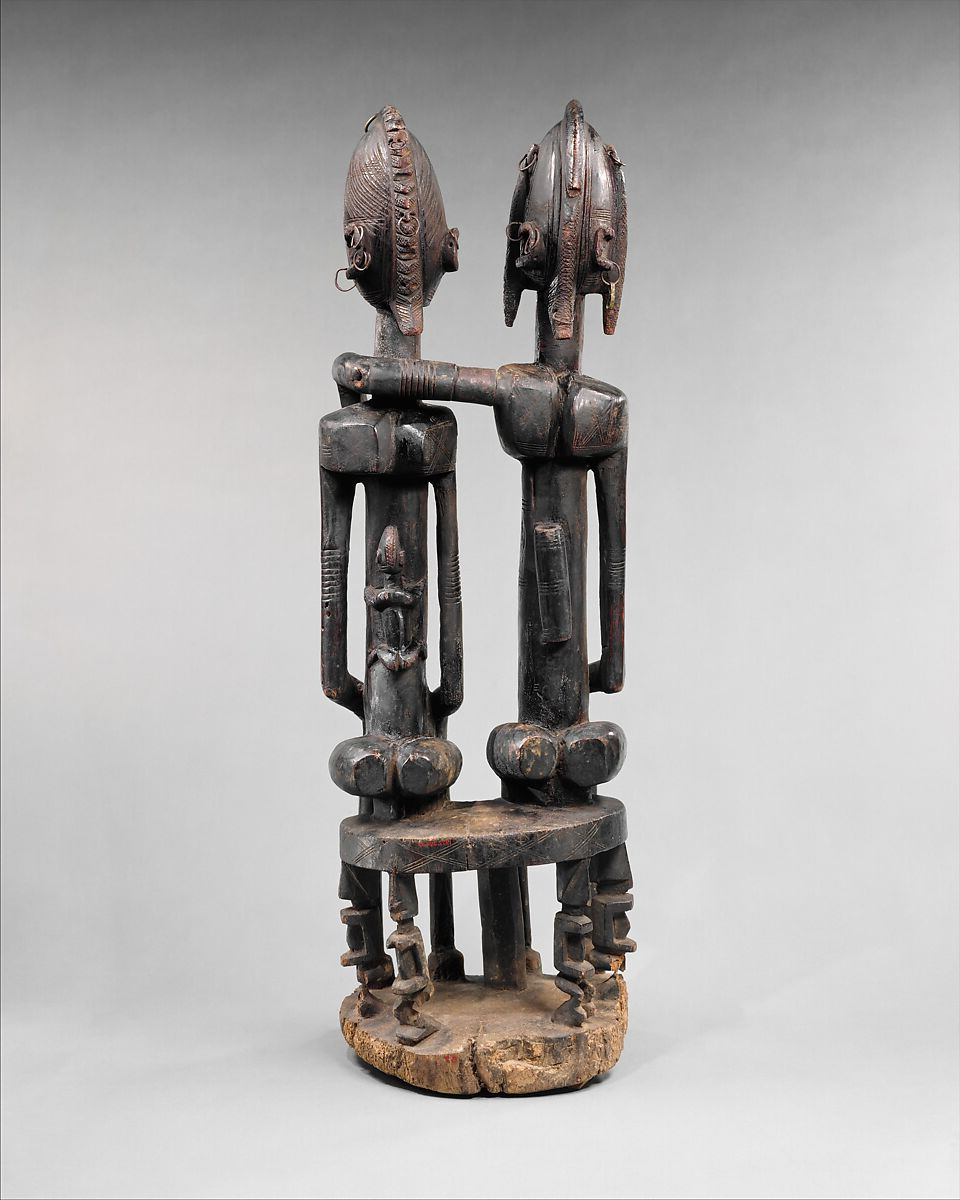The figure “Seated Couple” by an unknown Dogon artist is a piece representing the 18th-early 19th-century African art (see fig. 1). The selected art period was characterized by the use of wooden and metal elements in sculptures, as well as by rough and straight strokes. The themes represented in the period’s art pieces predominantly included everyday life, rituals, traditions, and feelings. The chosen piece represents the art period through its color, medium, and emotion.

Color has always been one of the most expressive elements of any artwork, and in this case, it is not an exception. The dark brown-black shades used in the figure represent the typical color choices of the selected period. Painters and sculptors used the materials available, which were largely wood and metal, allowing them to depict the life of the Mali people and their rituals. The colors also help to visualize what was the most important for Dogon culture: the place of humans within nature (Dal Verme). The lack of bright colors enables the viewer to focus on the people’s faces rather than clothes or some other accessories. Brown and black shades represent the unification of man with earth and focus on the people’s hard work necessary to provide for themselves.
The next element uniting the selected piece with its period is the medium. The figure is carved of wood and decorated with metal parts. By using straight lines, the artist makes the audience focus not on the differences between the male and female figures but on their similarities. The elongated bodies of the two figures are shown as a series of parallel vertical lines “traversed by horizontals” that bring them together (“Figure: Seated Couple”). Another aspect of the medium’s striking effect is that the artist was also able to show the figures on the back, hence explaining their idea on a deeper level (see fig. 2). A child clinging to the woman’s figure and a quiver on the man’s figure’s back represent the typical roles that males and females had in those times. The woman is shown as the nurturer and the man as the provider, them together creating an image of a family able to procreate and pass on their skills and wisdom to the coming generations.

Finally, the piece’s emotion is another element characterizing the art period in question. Dogon culture is known for being highly authentic, containing many myths about the creation of the world (Dal Verme). In the sculpture, the attitude toward the importance of a family can be clearly traced. The two adult figures, along with the small child on the woman’s back, represent both the unity of people in a family and the unity between people and nature. The man’s embrace signifies his protective and caring character. Overall, the emotion of the sculpture is a clear representation of Dogon culture.
The “Seated Couple” figure by a Dogon artist represents the selected period through its color, medium, and emotion. The artist captured the most typical and sacred emotions and beliefs of those people by using dark colors and rough materials and lines, as well as by showing people’s feelings and their connection with nature. The selected piece of art is a perfect demonstration of the 18th-early 19th-century African art.
Works Cited
Dal Verme, Giulia Zileri. “How Dogon Art Inspired Western Artists.” Barnebys, Web.
“Figure: Seated Couple.” The Met Museum, n.d., Web.